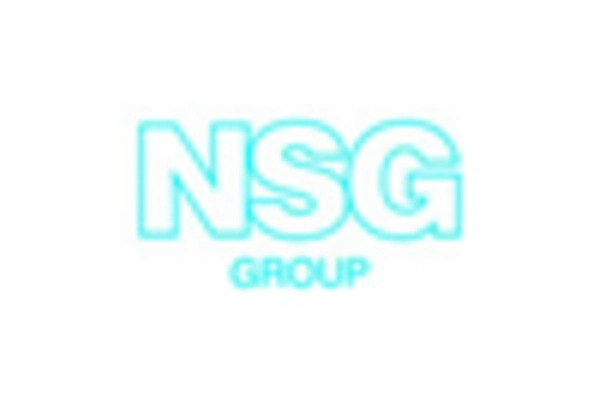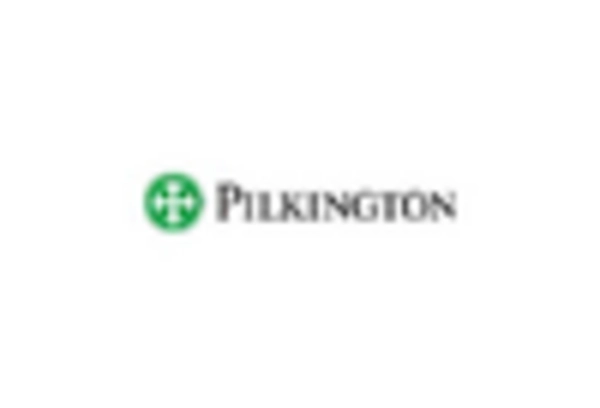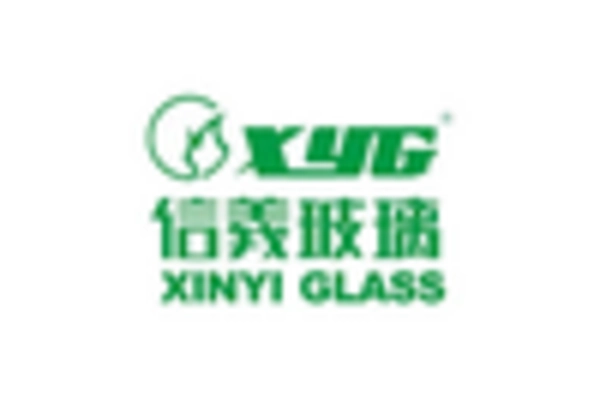Rising Vehicle Production
The automotive windshield market experiences a notable boost due to the increasing production of vehicles in the US. In recent years, the automotive industry has seen a resurgence, with vehicle production reaching approximately 10 million units annually. This surge in production directly correlates with the demand for windshields, as each vehicle requires multiple glass components. The automotive windshield market benefits from this trend, as manufacturers strive to meet the growing needs of automakers. Furthermore, the shift towards electric vehicles (EVs) is likely to further enhance this demand, as EVs often incorporate advanced windshield technologies. As a result, the automotive windshield market is poised for growth, driven by the overall expansion of vehicle manufacturing in the US.
Growth of Aftermarket Services
The automotive windshield market is experiencing a transformation due to the expansion of aftermarket services. As vehicles age, the need for windshield repairs and replacements becomes more prevalent. The aftermarket segment is projected to grow at a rate of approximately 5% annually, driven by factors such as increased vehicle ownership and the rising cost of new vehicles. This trend suggests that consumers are more likely to opt for repairs rather than purchasing new vehicles, thereby boosting the demand for windshield services. The automotive windshield market is capitalizing on this trend by offering innovative repair solutions and enhanced customer service. Consequently, the aftermarket segment is becoming a vital component of the overall market, contributing to its sustained growth.
Increased Focus on Safety Features
The automotive windshield market is significantly influenced by the heightened emphasis on safety features in vehicles. Modern vehicles are increasingly equipped with advanced driver-assistance systems (ADAS), which often rely on high-quality windshields for functionality. For instance, features such as lane departure warnings and collision avoidance systems utilize sensors embedded in the windshield. This trend indicates a growing market for windshields that not only provide visibility but also enhance vehicle safety. The automotive windshield market is adapting to these requirements by developing specialized glass that meets the stringent safety standards set by regulatory bodies. As consumer awareness of safety features rises, the demand for advanced windshields is expected to increase, further propelling the market.
Environmental Regulations and Standards
The automotive windshield market is increasingly shaped by stringent environmental regulations and standards. In the US, regulatory bodies are implementing measures aimed at reducing the environmental impact of automotive manufacturing. This includes mandates for the use of recyclable materials in windshield production and the reduction of harmful emissions during manufacturing processes. The automotive windshield market must adapt to these regulations, which may involve investing in sustainable materials and production techniques. As manufacturers comply with these standards, they not only contribute to environmental sustainability but also enhance their market competitiveness. This trend indicates a potential shift in consumer preferences towards eco-friendly products, which could further influence the dynamics of the automotive windshield market.
Technological Innovations in Glass Manufacturing
The automotive windshield market is significantly impacted by technological innovations in glass manufacturing. Advances in materials science have led to the development of lighter, stronger, and more durable glass products. For instance, the introduction of laminated glass has improved safety and noise reduction in vehicles. Additionally, innovations such as self-healing glass and smart glass technology are emerging, which could revolutionize the automotive windshield market. These advancements not only enhance the performance of windshields but also align with consumer preferences for high-tech features. As manufacturers continue to invest in research and development, the market is likely to witness a surge in demand for these innovative products, further driving growth.

















Leave a Comment